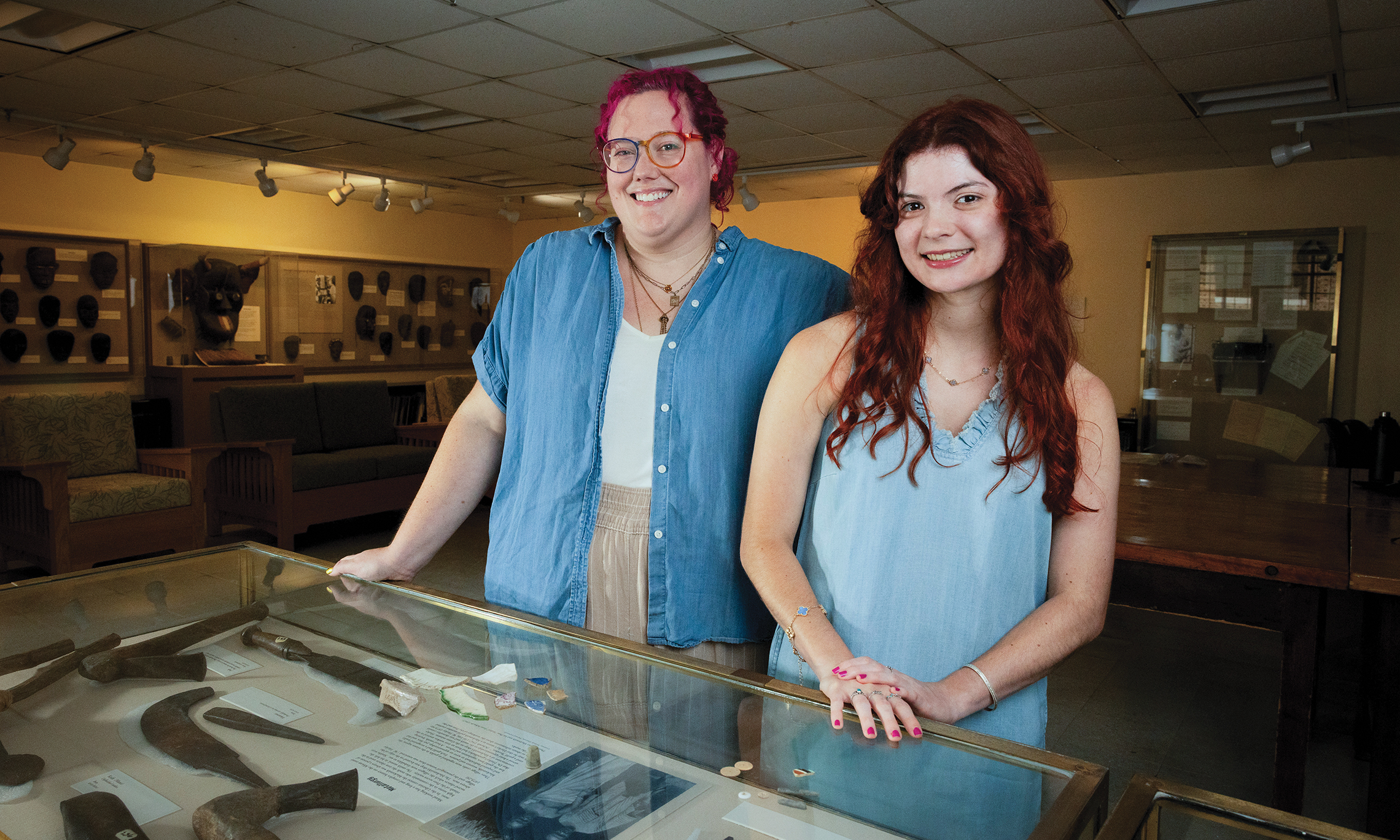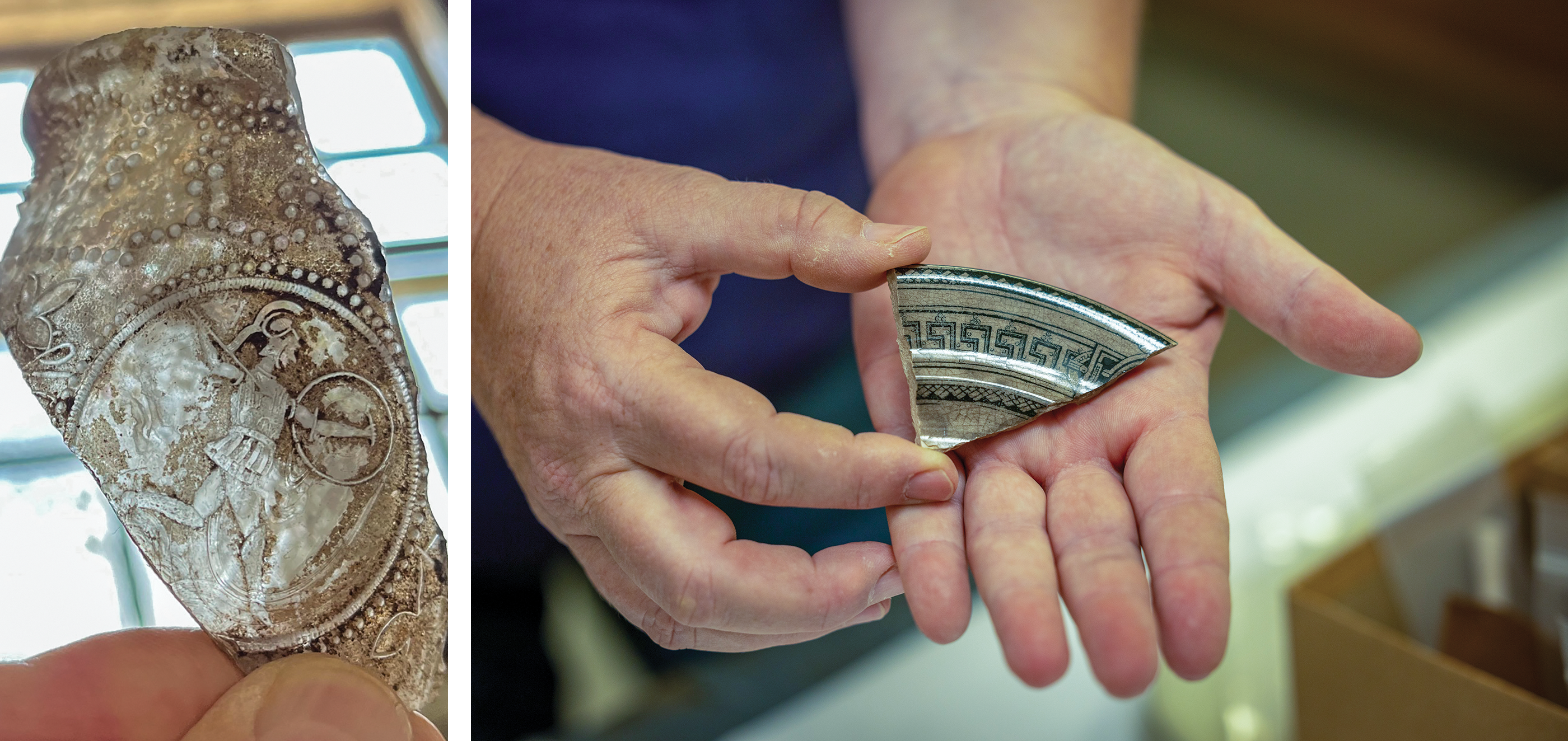LAYERED WITH HISTORY
The foundation and cellar discoveries were first made early this spring by Colonial Williamsburg Foundation (CWF) archaeologists conducting preliminary investigations for the Gates Hall renovation project. The W&M Real Estate Foundation is managing the renovation and expansion on behalf of the W&M Foundation. Since the spring, the W&M Center for Archaeological Research (the Center), under the leadership of Elizabeth J. Monroe and David Lewes, has expanded the excavation and led artifact recovery.
The cellar is sizeable: approximately 36 by 18 feet. Two distinct levels are emerging. The Center team has exposed the bottom of the cellar almost 18 inches higher than the previous depth found by the CWF team.
“It looks like the cellar was a partial cellar, and had different floor levels potentially,” says Center Project Archaeologist Tom Higgins. “It’s not a brick-lined cellar — it was probably dug soon after the foundations were laid.”
In addition to the foundation and cellar, their work is revealing a rich archaeological story that stretches from the 18th century to the mid-20th century. Each excavated layer reveals more discoveries: jewelry, slate pencil fragments, sherds of pottery and vases, buttons — the stuff of everyday life, the ephemera of history.
The excavations also reveal the people who created or used these objects, from the Indigenous and enslaved creators of colonoware pottery to the 20th-century residents of Brown Hall who left behind sherds of Greek Revival ceramics and decorative items. Before it was moved down Prince George Street in 1930, the original Williamsburg Bray School building housed Methodist women attending William & Mary from 1924-1930. These students were among the first generations of women to attend college in the U.S. The significance of these discoveries is amplified by the site’s connection to the Williamsburg Bray School.
A favorite recovery of the team is a fragment of glass depicting Minerva, Roman goddess of wisdom, justice, war and the arts. The Minerva fragment juxtaposes with a piece of late 19th century or early 20th century flatware, painted with a Greek meandros pattern. “We know that the girls at Brown Hall were furnishing their dorms,” says Michele L. Brumfield, senior researcher at the Center. “So maybe they were bringing in things like this.”
The team is careful not to draw too many conclusions from what they are finding — yet. “It’s early days,” Monroe adds. Bagged and labeled on site, artifacts are housed at the lab at the Center for further study.

